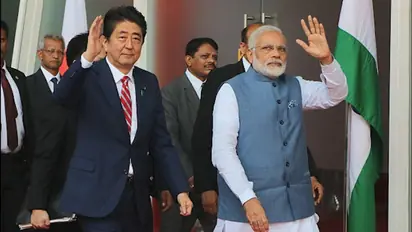Japan supports India on eastern Ladakh standoff with China

Synopsis
Post a meeting with foreign secretary Harsh Vardhan Shringla Japanese ambassador Satoshi Suzuki said Japan hoped for peaceful resolution of the row through dialogues
New Delhi: In strong support to India over its border standoff with China in eastern Ladakh, Japan on Friday said it opposed "any unilateral" attempts to change the status quo in the region.
After a meeting with foreign secretary Harsh Vardhan Shringla, Japanese ambassador Satoshi Suzuki said Japan hoped for peaceful resolution of the row through dialogues.
"Had a good talk with FS Shringla. Appreciated his briefing on the situation along LAC, including GOI''s policy to pursue peaceful resolution. Japan also hopes for peaceful resolution through dialogues. Japan opposes any unilateral attempts to change the status quo," he said on Twitter.
The Indian and Chinese armies are locked in a bitter standoff in multiple locations in eastern Ladakh for the last seven weeks.
The tension escalated manifold after 20 Indian soldiers were killed in a violent clash in Galwan Valley on June 15. The Chinese side also suffered casualties, but it is yet to give out details.
India has been insisting on restoration of status quo ante in all areas of eastern Ladakh to restore peace and tranquillity in the region.
In the meeting, Shringla is learnt to have briefed the Japanese envoy about the overall situation in eastern Ladakh and India's position on the issue.
India and China have held several rounds of diplomatic and military talks in the last few weeks to ease tension in the region. However, there was no visible sign of end to the standoff though the two sides agreed to initiate disengagement of the forces from the region.
India on Thursday said it expected China to ensure expeditious restoration of peace and tranquillity in the border areas in sync with provisions of relevant bilateral pacts.
Following the Galwan Valley clashes, the Army has sent thousands of additional troops to forward locations along the border besides moving in heavy weapons. The IAF has also moved air defence systems as well as a sizeable number of its frontline combat jets and attack helicopters to several key air bases.
Check the Breaking News Today and Latest News from across India and around the world. Stay updated with the latest World News and global developments from politics to economy and current affairs. Get in-depth coverage of China News, Europe News, Pakistan News, and South Asia News, along with top headlines from the UK and US. Follow expert analysis, international trends, and breaking updates from around the globe. Download the Asianet News Official App from the Android Play Store and iPhone App Store for accurate and timely news updates anytime, anywhere.